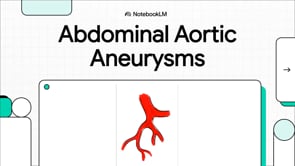Radioterapian johtava asiantuntija, lääketieteen tohtori Stephan Bodis, kertoo radioskirurgian tarjoavan tehokkaan vaihtoehdon leikkaukselle vaiheen 1 ja 2 ei-pienisoluisen keuhkosyövän hoidossa, erityisesti iäkkäillä potilailla. Hän käsittelee myös aivojen ennaltaehkäisevää sädehoitoa vaiheen III keuhkosyöpään ja korostaa ETOP:n, NCCN:n ja ESMO:n keskeisiä suosituksia optimaalisen hoitosuunnittelun kannalta.
Edistysaskeleet ei-pienisoluisen keuhkosyövän sädehoidossa: radioskirurgia ja ennaltaehkäisevä hoito
Hyppää osioon
- Radioskirurgia vaiheessa 1 ja 2 olevaan ei-pienisoluiseen keuhkosyöpään
- Hyödyt iäkkäille ja heikoille potilaille
- Ennaltaehkäisevä aivosädehoito
- Sädehoito edenneen vaiheen ei-pienisoluiseen keuhkosyöpään
- Pienisoluisen keuhkosyövän erityisnäkökohtia
- Keskeiset hoitosuositukset
- Koko tekstitys
Radioskirurgia vaiheessa 1 ja 2 olevaan ei-pienisoluiseen keuhkosyöpään
Lääketieteen tohtori Stephan Bodis korostaa radioskirurgian olevan läpimurto varhaisvaiheen ei-pienisoluisen keuhkosyövän (NSCLC) hoidossa. Tämä tarkka sädehoitomenetelmä käyttää korkeita säteilyannoksia harvemmissa hoitokerroissa, ja viiden vuoden seuranta-aineistot osoittavat erinomaisia tuloksia, jotka vastaavat kirurgista hoitoa. Vaiheessa 1 oleville potilaille radioskirurgia tarjoaa leikkausta vähemmän invasiivisen vaihtoehdon, kun kuvantamisessa havaitaan taudin etenemistä, jopa ilman koepalan vahvistusta.
Sädehoidon erikoislääkäri huomauttaa, että tämä lähestymistapa on erityisen arvokas, kun rintakehän leikkaus aiheuttaa korkeita riskejä. Vaikka pitkäaikaistehokkuudesta käydään edelleen keskustelua, tohtori Bodis korostaa, että radioskirurgiasta on tullut standardihoito valituille vaiheessa 1 ja 2 oleville NSCLC-potilaille esimerkiksi Alankomaissa.
Hyödyt iäkkäille ja heikoille potilaille
Radioskirurgia osoittautuu erityisen hyödylliseksi iäkkäille potilaille, joilla on muita sairauksia. Lääketieteen tohtori Stephan Bodis selittää, että heikot potilaat, joilla on vaiheessa 1 oleva sairaus, eivät usein kestä lohkoleikkausta, mikä telee kohdennetusta sädehoidosta ihanteellisen ratkaisun. Hoito vaatii vain 3–5 avohoitojaksoa lyhyellä toipumisajalla.
Iäkkäiden potilaiden lisäksi tohtori Bodis huomauttaa, että jopa terveet potilaat valitsevat yhä useammin radioskirurgian välttääkseen suuremman leikkauksen. Zürichissä toimiva asiantuntija toteaa, että tämä heijastaa laajempia trendejä kohti vähemmän invasiivisia syöpähoitoja, kun hoidon tulokset osoittautuvat vertailukelpoisiksi.
Ennaltaehkäisevä aivosädehoito
Vaiheessa III oleville potilaille, jotka ovat remissiossa, tohtori Bodis kuvaa merkittäviä edistysaskeleita ennaltaehkäisevässä kallon sädehoidossa (PCI). Tämä lähestymistapa, jossa annostellaan 20–24 Gy (gray) perushoidon jälkeen, vähentää mikroskooppisia aivometastaaseja, jotka kehittyvät usein edenneessä keuhkosyövässä.
Lääketieteen tohtori Stephan Bodis selventää, että PCI sekä ehkäisee metastaaseja että viivästyttää oireellista etenemistä. Vaikka se ei sovellu kaikille potilaille, tämä ennaltaehkäisevä strategia tarjoaa merkittävää hyötyä vaiheessa III oleville potilaille, jotka ovat hyvässä kunnossa alkuperäisen hoidon jälkeen, erityisesti yhdistettynä moderniin kuvantamisseurantaan.
Sädehoito edenneen vaiheen ei-pienisoluiseen keuhkosyöpään
Vaiheessa 2–4 olevaan ei-pienisoluiseen keuhkosyöpään tohtori Stephan Bodis korostaa tarkkuutta hoitomuotojen yhdistelyssä. Sädehoidon erikoislääkäri varoittaa liiallisesta hoidosta ja suosii sädehoitoa vain, kun siitä on selkeää hyötyä esi- tai lisähoidossa. Modernit lähestymistavat välttävät laajoja sädekenttiä ja suosivat kohdennettua annostelua vähentyneellä myrkyllisyydellä.
Tohtori Bodis huomauttaa erityisestä edistymisestä valituille vaiheessa 4 oleville potilaille, joilla kohdennettu sädehoito voi tehokkaasti hallita oligometastasaista sairautta. Hoitojen järjestys pysyy monimutkaisena ja vaatii huolellista arviointia kunkin potilaan kasvainbiologiasta ja yleisestä terveydentilasta.
Pienisoluisen keuhkosyövän erityisnäkökohtia
Vaikka ei-pienisoluiseen keuhkosyöpään on tehty merkittäviä edistysaskeleita, tohtori Bodis kuvaa rajoitetumpia vaihtoehtoja pienisoluiseen keuhkosyöpään (SCLC). Laajalle levinneessä SCLC:ssä sädehoidolla on vähäinen rooli, ja kemoterapia pysyy ensisijaisena hoidona. Rajoitetussa vaiheessa olevassa taudissa saattaa seurata kemoterapian jälkeen kohdennettua sädehoitoa huolellisesti valituille potilaille.
Zürichin professori toteaa, että tämä heijastaa NSCLC:n ja SCLC:n välisiä perustavanlaatuisia biologisia eroja, joista jälkimmäinen on useimmiten systeemisesti levinnyt jo diagnoosivaiheessa.
Keskeiset hoitosuositukset
Lääketieteen tohtori Stephan Bodis suosittelee useita auktoritatiivisia resursseja nykyisiin keuhkosyövän sädehoitosuosituksiin. European Thoracic Oncology Platform (ETOP) tarjoaa kattavia vuosittaisia päivityksiä, kun taas NCCN ja ESMO tarjoavat käytännön hoitosuosituksia. Suurissa konferensseissa, kuten ASCO, ASTRO ja ESTRO, esitellään huippuluokan tutkimustuloksia.
Potilaille, jotka etsivät toista lausuntoa, tohtori Bodis korostaa, että nämä näyttöön perustuvat resurssit auttavat varmistamaan, että ehdotetut sädehoitosuunnitelmat edustavat optimaalista personoitua hoitoa. Tämä on erityisen arvokasta, kun harkitaan uudempia lähestymistapoja, kuten radioskirurgiaa tai ennaltaehkäisevää aivosädehoitoa.
Koko tekstitys
Radioskirurgiaa voidaan käyttää menestyksekkäästi vaiheessa 1 ja 2 olevaan ei-pienisoluiseen keuhkosyöpään. Keuhkosyövän hoito iäkkäillä potilailla voi sisältää ennaltaehkäisevää sädehoitoa mahdollisia aivo- ja selkäydinmetastaaseja vastaan.
Sädehoito on eturintamassa keuhkosyövän uusissa yhdistelmähoidoissa. Radioskirurgia sopii erityisen hyvin heikkojen iäkkäiden potilaiden hoitoon, joilla on vaiheessa 1 oleva ei-pienisoluinen keuhkosyöpä. Vaiheessa 1 olevan keuhkosyövän hoito radioskirurgialla on erinomainen vaihtoehtoinen hoito.
Joillekin valituille vaiheessa 4 olevan keuhkosyövän potilaille sädehoito toimii hyvin. Ennaltaehkäisevä aivosädehoito edenneessä ei-metastasaiseen vaiheessa III olevaan ei-pienisoluiseen keuhkosyöpään tarjoaa hoitovaihtoehtoja. Toinen lääketieteellinen lausunto auttaa vahvistamaan sädehoitosuunnitelmat ja sisällyttämään parhaat yhdistelmähoidot.
Lääketieteen tohtori Anton Titov: Puhutaanpa keuhkosyövästä. Keuhkosyöpä pysyy erittäin tappavana sairautena. Yli 80 % kaikista keuhkosyöpäpotilaista on ei-pienisoluisen keuhkosyövän histologiaa. Keuhkosyövän hoidossa on tapahtunut monia edistysaskeleita, mutta parantuminen on edelleen harvinaista.
Sädehoito on eturintamassa keuhkosyövän uusissa yhdistelmähoidoissa. Olet äskettäin julkaissut katsauksen kehittyneestä sädehoidosta keuhkosyöpään. Voitko tiivistää nykyiset edistysaskeleet radikaalissa perussädehoidossa keuhkosyöpään? Entä leikkausta edeltävä eli neoadjuvantti sädehoito keuhkosyöpään?
Lääketieteen tohtori Stephan Bodis: Sädehoito keuhkosyövässä on nopeasti kehittyvä ala. Keuhkosyövän sädehoito on erittäin monimutkaista. Kansainvälisissä aikakauslehdissä on julkaistu lukuisia erinomaisia suosituksia.
Haluaisin aloittaa lääketieteellisten yhdistysten suosituksista, jotka kokoavat hoitosuositukset keuhkosyöpään. European Thoracic Oncology Platform (ETOP) on erinomainen alusta oppia nykyisestä edistymisestä. Heillä on hyviä vuosiraportteja ja yhteenvetoja.
NCCN:n suositukset keuhkosyövän hoidosta ovat hyödyllisiä. ESMO:n vähimmäissuositukset keuhkosyövän hoidosta ovat myös avuliaita. Jotkut valitut kansalliset suositukset voivat auttaa ymmärtämään nykyistä keuhkosyövän hoitoa.
Sädehoidon näkökulmasta suurin edistysaskel keuhkosyövän hoidossa tulee radioskirurgiasta. Radioskirurgia sopii erityisen hyvin heikkojen iäkkäiden potilaiden hoitoon, joilla on vaiheessa 1 oleva ei-pienisoluinen keuhkosyöpä.
Vaiheessa 1 olevan keuhkosyövän hoidon tulokset radioskirurgialla ovat hyviä, jopa erinomaisia. Seuranta-aika on nyt yli viisi vuotta, mutta se on vielä liian lyhyt lopullisiin johtopäätöksiin. Pääkonsensus on, että radioskirurgia on ainakin erinomainen vaihtoehto avoimeen rintakehän leikkaukseen.
Radioskirurgialla on vaikutuksensa paikalliseen vaiheessa 1 ja 2 olevaan ei-pienisoluiseen keuhkosyöpään. Se on tehokasta iäkkäille, heikoille potilaille ja voi hyödyttää myös erinomaisessa kunnossa olevia potilaita, jotka haluavat välttää suuremman leikkauksen.
Yhdistelmähoidoissa edenneessä vaiheessa 2, vaiheessa 3 ja valitussa vaiheessa 4 olevaan keuhkosyöpään on tehty monia kliinisiä tutkimuksia. Trendi on käyttää vain tehokkuuden osoittanutta hoitoa, sädehoidon annostaessa vähäisimmällä myrkyllisyydellä.
Toinen näkökohta on ennaltaehkäisevä hoito potilaille, joilla on vaiheessa III oleva sairaus hyvässä kunnossa. Ennaltaehkäisevää aivosädehoitoa käyttäen 20–24 grayä lopullisen paikallisen hoidon jälkeen käytetään nyt laajalti. Tämä voi viivästyttää metastasaiseen sairauteen liittyvää oireellista etenemistä.
Lääketieteen tohtori Anton Titov: Se on olennaisesti ennaltaehkäisevä hoito mahdolliselle aivo- ja selkäydinmetastaaseille keuhkosyövässä.
Lääketieteen tohtori Stephan Bodis: Pienisoluiseen keuhkosyöpään sädehoidolla on vähäinen rooli laajalle levinneessä sairaudessa. Rajoitetussa pienisoluiseen keuhkosyöpään hoito on edelleen kemoterapiaa, jota seuraa kohdennettua sädehoitoa huolellisesti valituille potilaille hyvässä kunnossa.






